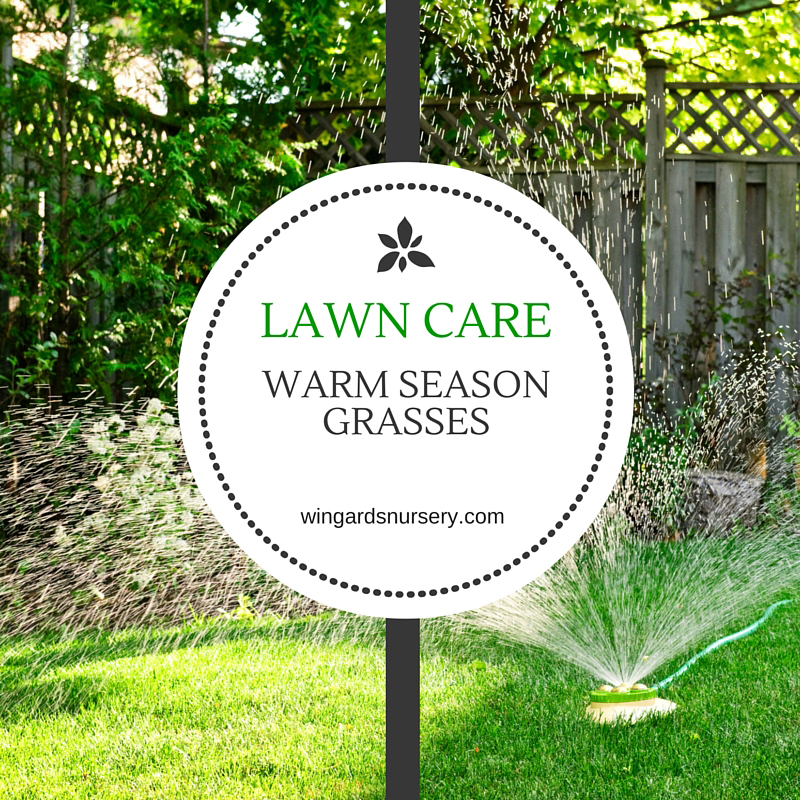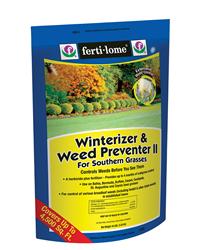How well do you understand your soil? It’s more than just dirt, and the more you learn about soil, the better you’ll be able to care for it to ensure a stunning landscape, healthy lawn and productive garden.
Soil is often referred to as the “foundation of life.” The foundation must be strong and healthy before great things can be developed. We are blessed with two types of soils in Lexington County: clay soils and sandy soils. Both of the soil types need some extra help when we are trying to grow vegetables, flowers, turfgrass, shrubs and trees.
All About Soil
All soils are comprised of air, water, minerals, living organisms, and soil particles. The soil particles are sand, silt and clay. The percentage of these particles make up the soil’s texture which is important to overall soil and plant health as it relates to soil “porosity”, the pore spaces where water and air reside. Of course we all want loam – that rich, vibrant soil thriving with beneficial bacteria and with a smooth but crumbly texture ideal for root growth. Most of the time the particles are not balanced, but amendments can be added to improve soil health and create that loamy soil where plants thrive.
Improving Soil
Improving soil is actually quite easy. All soils are improved by adding minerals and organic material that help balance out the overall components of the soil’s structure.
Soil Testing
The first step in improving the soil is to take a soil sample test. For spring plantings and maintenance applications take the samples in early winter in order to give you ample time to plan and apply any nutrients that may be needed. The soil samples are analyzed in a laboratory to indicate the levels of nutrients in your soil, the report will tell you the pH value and it will make a recommendation for the amount and type of fertilizer and/or lime you need to add to the soil for optimum plant growth. Using the results of the soil test allow you to apply the correct amount of fertilizer for your specific needs.
How to take a soil sample
To have a soil analysis done you need to collect 8 to 10 or more core samples, which will be combined as one composite sample. The composite samples should include soil from the surface to a depth of 6 inches in all areas, except for lawns where core samples should be taken from a depth of only 2 to 4 inches. A simple garden trowel can be used to collect the core samples. Place the core samples in a clean plastic bucket and mix them thoroughly. Keep sampling separate from areas that have been fertilized or limed differently, such as lawns, shrub beds, and vegetable gardens. These should be submitted as separate composite samples. It is imperative to use clean sampling tools. You can obtain a soil test bag from Wingard’s or the Clemson Extension office and fill the bag to the fill line indicated on the bag. Be sure to keep track of which part of your yard, landscape, or garden the sample represents. Take the soil sample to Wingard’s or the Clemson Extension Service office. The charge is 6 dollars per sample. It is recommended to soil test every year.
Understanding your soil test results
Within 7 to 14 days the results will be emailed or mailed to you. Your soil analysis will have the soil pH value and a bar graph representing the amount of soil nutrients found. It will have a section at the bottom of the first page which shows how much lime (if needed) to add for each 1000 square feet and refer you to specific comments on the last page. The comments section will tell you what type of fertilizer(s) you need, how much you need and when to apply it. Feel free to bring the sample report by Wingard’s for assistance in reading the report.
Amending the soil
Adding organic matter is a great way to improve the health of both sandy and clay type soils. Organic matter refers to plant or animal materials decomposed into compost or “humus.” Organic material aids in moisture holding capacity, aeration of the soil, provides beneficial microbes and bacteria all of which improve nutrient uptake for the plant. Materials like composted cow manure (Black Kow), Stout Ollie Compost, and Mushroom Compost are excellent amendments for your soil. These materials can be incorporated into the soil through mechanical or manual tilling of the soil to a depth of 4 – 6 inches.
For sandy soils we recommend Daddy Pete’s Planting Mix as an organic amendment. This organic mixture is suitable for flower and vegetable gardens, backfilling shrub and tree plantings, and for general landscape needs. Daddy Pete’s Planting Mix is a mixture of Daddy Pete’s Composted Cow Manure and premium aged pine bark fines.
When planting shrubs in clay soils we recommend mixing Soil Conditioner/Enhancer in the backfill to add organic matter and loosen the clay particles.
The Magic of Mulch
Mulching is a simple way to add biodegradable materials to the soil. Pine needles, tree leaves, lawn clippings, bark, chicken manure, etc., can be worked into the soil to decompose. This process improves the air spaces between the soil particles and rearranges the sand, silt and clay to produce optimum soil structure, improving the water retention and drainage balance and making nutrients available to plants.
ONE LAST THING
Use Natural Guard organic fertilizers made with Jobe’s Biozome, a unique and proprietary blend of beneficial microorganisms. These microorganisms break down complex materials and minerals to improve long-term soil quality, helping roots grow and plants to absorb nutrients they need. Jobe’s Biozome naturally re-establishes a balance between plant and soil. When soil has proper structure and sufficient nutrients for healthy plants, optimum health has been achieved, and great soil will lead to great landscaping, turf and gardens. Congratulations and keep on growing!
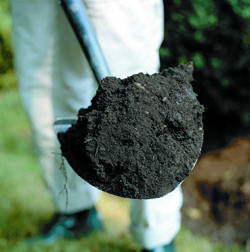
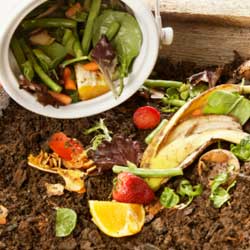
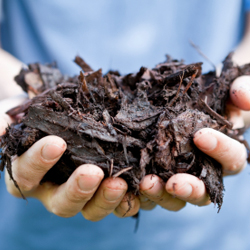
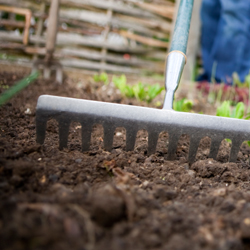

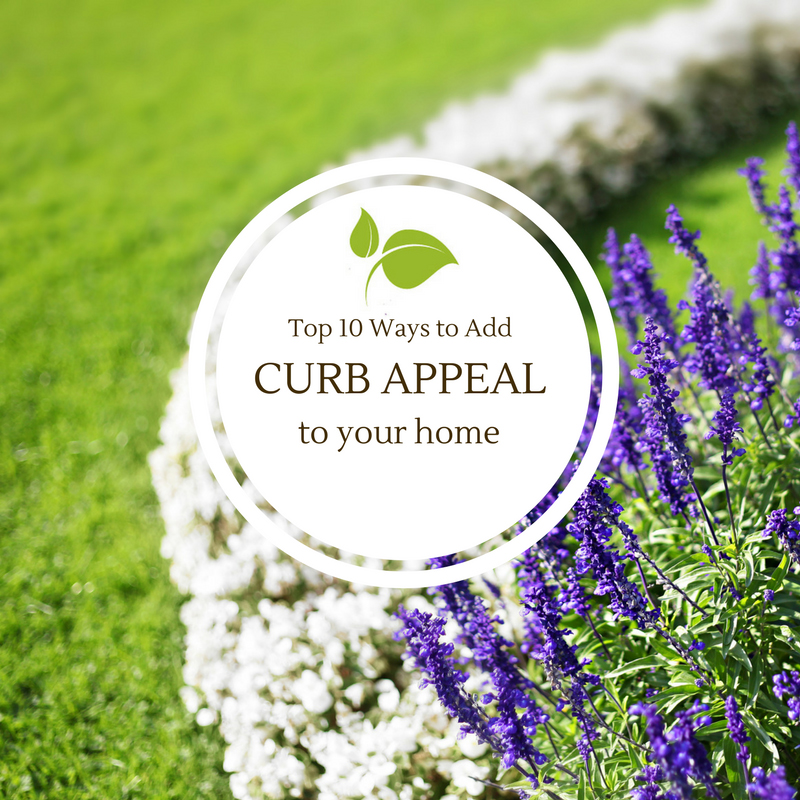

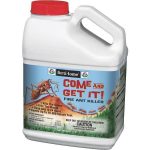 Use granular fire ant baits (Fertilome Come & Get It) as the foundation of your fire ant control program.When used correctly, baits will give around 80 to 90 percent control, leaving a lot fewer mounds to spot treat than if you rely on mound treatments alone. Granular fire ant baits contain slow-acting insecticides or insect growth regulators that disrupt development of the immature fire ants. The key to using baits successfully is to spread them over the entire yard, rather than sprinkling them on top of individual mounds. Application rates are low, only around 1-1.5 pounds per acre, which is only a fraction of an ounce per 1,000 square feet. Worker ants will collect the granules, carry them back to the mound, and feed them to the immature ants. Baits should be applied three times per year: spring, summer, and fall.
Use granular fire ant baits (Fertilome Come & Get It) as the foundation of your fire ant control program.When used correctly, baits will give around 80 to 90 percent control, leaving a lot fewer mounds to spot treat than if you rely on mound treatments alone. Granular fire ant baits contain slow-acting insecticides or insect growth regulators that disrupt development of the immature fire ants. The key to using baits successfully is to spread them over the entire yard, rather than sprinkling them on top of individual mounds. Application rates are low, only around 1-1.5 pounds per acre, which is only a fraction of an ounce per 1,000 square feet. Worker ants will collect the granules, carry them back to the mound, and feed them to the immature ants. Baits should be applied three times per year: spring, summer, and fall.
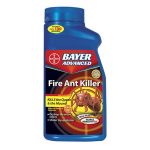 Keep a can of one of the dry fire ant mound treatment products (Bayer Fire Ant Killer) on hand to spot-treat mounds that survive the bait treatments.Dry mound treatments are applied directly to the mound; just sprinkle the specified amount evenly over the top of the mound and walk away. It will take a couple of days to a week for the mound to die out. For mounds that need to be controlled immediately use a liquid drench. Dilute in water as indicated on the label and pour the drench over the mound. Liquid drenches kill quickly but are more messy and time-consuming than dry mound treatments. The key to success with drenches is to use enough liquid to thoroughly soak the mound, about 1-2 gallons.
Keep a can of one of the dry fire ant mound treatment products (Bayer Fire Ant Killer) on hand to spot-treat mounds that survive the bait treatments.Dry mound treatments are applied directly to the mound; just sprinkle the specified amount evenly over the top of the mound and walk away. It will take a couple of days to a week for the mound to die out. For mounds that need to be controlled immediately use a liquid drench. Dilute in water as indicated on the label and pour the drench over the mound. Liquid drenches kill quickly but are more messy and time-consuming than dry mound treatments. The key to success with drenches is to use enough liquid to thoroughly soak the mound, about 1-2 gallons.